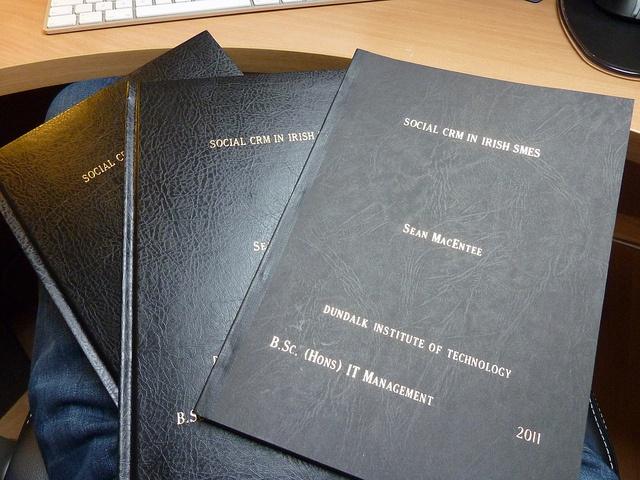New Process Efficiently Uses Solar to Produce Hydrogen


Not long ago, we heard a great deal about the “hydrogen economy.” While the prospect of using hydrogen for vehicle fuel, as well as other energy storage functions, is not dead, it has faded into the background as a number of technical hurdles need to be overcome.
Cost is one factor, especially as battery costs continue to fall. A battery will never be able to deliver the amount of energy capacity per pound as hydrogen, though with battery-powered vehicle ranges in excess of 200 miles, that might be good enough for many applications. Heavier vehicles like trucks, trains and airplanes will likely need some other approach for which hydrogen still has great potential. But another problem facing hydrogen is where to get it in the first place.
Both of the most common methods, electrolysis and natural gas reforming, have issues. Electrolysis -- applying electric current to water to break it into its constituent parts: hydrogen and oxygen -- is straightforward and clean. However the amount of energy required for this is quite high.
Natural gas reforming, as the name implies, takes in natural gas and generally uses steam to extract hydrogen from it. As of now, natural gas is abundant and quite inexpensive. However, the process emits CO2 as a by-product -- which, to some extent, defeats the purpose of producing a clean fuel.
Now, a company called HyperSolar claims to have developed a commercially-scalable method of producing hydrogen using only sunlight and water.
The photoelectrochemical process, which HyperSolar claims was inspired by photosynthesis, uses a self-contained hydrogen generator: Water flows through, and hydrogen and oxygen are extracted at the cathode and anode, respectively, while sunlight enters from above.
If all the company did was use solar as the energy source for electrolysis, that wouldn’t be anything new. The amount of solar power required would still be cost prohibitive. But the HyperSolar system has two distinct advantages.
First, it facilitates a more complete transfer of energy into each hydrogen molecule. This provides a great deal more stored energy for each unit of energy input, which greatly reduces cost. Secondly, unlike conventional electrolysis systems, which require purified water, this system can use ocean water, waste water or just about any other water source. This is crucial as water has become as critical an issue as energy, and in some places even more so.
How is this accomplished? The HyperSolar technology is based on two breakthroughs. The company developed a nanoparticle that is designed to mimic natural photosynthesis in the way that it absorbs sunlight, as well as provide integrated anode and cathode areas that efficiently split the water and transfer electrons into the molecular hydrogen bonds. This process effectively captures far more of the sun's energy and transforms it into hydrogen than other approaches. Furthermore, each particle is encapsulated in a protective coating that allows it to be submerged under water without corrosion or short-circuiting. This allows the particles to be used in a wide range of water conditions.
The combination of these two elements provide a distinctive economic advantage. But is it enough to relaunch the hydrogen economy? Only time will tell.
Image credit: Pixabay
Sustainable Packaging Solutions for the E-Commerce Sector


By Pierre Melion
E-commerce offers great customer convenience and satisfaction. But one of the biggest problems facing the shopping medium is the byproducts and waste produced, the majority deriving from packaging.
Rowena Perrot, general manager of the packaging company Boxtopia says: "The packaging your business produces is a vital part of your brand identity. Creating a nuisance byproduct from your product packaging can connote a wasteful perspective attached to your business."
It is essential that e-commerce companies seek to develop and act upon this area of the customer journey, to follow a more sustainable and ethical practice. Creating sustainable packaging can be rewarding for your organization and its profile, putting you a step ahead of industry packaging trends.
Customer-gained value
The medium of e-commerce is highly dependent on service. Reviewing your tangible and intangible service offerings is vital to inform value through your e-commerce products. The service-dominant logic theory argues that customer value is co-created, involving engagement from both the customer and business. Understanding the co-creation of value is vital for implementing business returns, as well as informing customers of the environmental benefits they gain by purchasing from your business.Implementing sustainability
Creating more environmentally-friendly packaging can mean you incur higher operational costs. This is why it is important to scope out how you can run a more eco-friendly business, while being able to operate sustainably. Applying theory such as John Elkingston’s Triple Bottom Line model, will allow you to evaluate the social, economic and environmental factors to sustainable business practice. Reviewing your organization in this way highlights areas your business will need to develop to compensate for a potential increase in postage and packaging costs.
Source more responsible materials
Packaging isn’t just a byproduct; it’s part of your brand identity! If your packaging is seen as environmentally wasteful, you may risk lowering your perceived company profile.
Source more environmentally-friendly packaging materials. Depending on the industry you operate in, it’s worthwhile to consider what may be the most environmentally-friendly properties for your product packaging. It may not be the cheapest alternative, but you can still use it to your advantage.By sourcing more sustainable materials, you can mention it as a unique selling proposition to show that you are an environmentally aware company. The cost can sometimes be a bit higher to source environmentally-friendlier packaging, but the returns can be valuable if it results in creating a greater company profile. With organizations leading to go more sustainable, why not take the plunge now and become a market role model?
Sustainable design
Sustainable materials are one thing, but maybe your packaging design can create sustainability. Sustainable packaging designs with responsible materials go together hand-in-hand.The popcorn packaging concept by Diana Chirilas sees packaging as a means of allowing you to proportion your contents. This allows consumers to be less wasteful with the products they buy, with the ability to ration their popcorn. This relationship between the packaging and its contents enforces the idea of sustainability, which goes further than just using responsible packaging properties. This concept can be incorporated into your product packaging to enforce a less wasteful design. This packaging design approach reflects an ethical and sustainable company perspective, both through packaging properties and functionality.
Instant-light charcoal bags -- which can be used as kindling to light charcoal in a grill -- are another age old example of functional packaging. Again, this packaging holds a strong relationship with its contents. This multi-purpose design makes for an efficient use of a rather cumbersome product. Transportation waste is disposed of with the an easier means of product functionality. The concept behind this design sees for a sustainable and functional form of packaging that can be applied to the e-commerce sector.
What if I have no control over the products I sell?
If you're not directly capable of altering the products or packaging on sale, you can still have an input into leading a more sustainable practice. What you can give back to your customers is information on how they can go about recycling and upcycling the packaging from the products they buy from you. An example of this could be creating an interactive digital campaign which is informative to the viewer, while being engaging enough to gain Web traction. Energy supplier Yū Energy, recently rolled out an engaging interactive campaign that educates customers about how the U.K. sources its energy. This concept could prove an important step to improving your corporate responsibility profile, while educating customers in exciting ways.An upcycling recommendation example could replicate that of Rosenbaum’s bottle wall project in Brazil. The project saw the design team creating a green wall using upcycled plastic bottles, just one of the upcycling ideas you can recommend your customers buying your products.
What next?
Taking the possible sustainability routes into consideration, you have to make sure your organization can still operate. Reviewing your company’s logistics is key to deciding which method your organization can effectively sustain. And improving your impact on our global environment should not be done silently. Let others know about the efforts your business takes, and maybe you will inspire others to do the same.Image credit: Pixabay
Based in Nottingham, United Kingdom, Pierre is a digital marketing executive at Impression. He has knowledge within the e-commerce packaging sector, and his role includes improving e-commerce customer engagement strategies. You can reach out via Twitter (@impressiontalk) and Instagram (Impressiontalk)"
What a waste of business resource!


By Mike Tuffrey, co-founder, Corporate Citizenship —
Corporations spend billions every year on causes and in communities around the world. But a shocking new survey shows they actually know little about the difference it makes.
Nowadays everyone agrees that spending shareholder funds in scattergun philanthropy doesn’t make sense: it’s not good for people in need, nor for companies trying to justify and sustain a community investment (CCI) programme.
So Corporate Citizenship asked corporate responsibility and sustainability practitioners how they set objectives and whether they measure outcomes. Over 130 practitioners from around the world replied. A massive three quarters said they aspire to achieve long-term impact with their CCI. But fewer than half (44%) said they are actually measuring their impacts in the community. An even smaller proportion (28%) is trying to work out the benefits to the business.
That means we don’t know whether half of that investment is doing any good at all. At best, half the spend is less effective than it could be; at worst it’s being wasted. As the old cliché goes - if you can’t measure it, you can’t manage it. And without management, there’s no guarantee of good results. (That’s why hundreds of companies work with Corporate Citizenship through the LBG network to put in place the right systems to capture the resources invested, the activities undertaken and the change thereby achieved, using benchmarking to look at inputs, outputs and impacts.)
Just how much is at risk of being wasted, and what can we all do about it?
Members of LBG collectively invest $4 billion a year – equivalent to 1.1% of profits – mobilising 600,000 of their employees, supporting 260,000 organisations and ultimately benefiting more than 10 million people. We know because they measure it.
The Giving USA survey says corporate America donates $18 billion a year, though the true figure could be many times larger if the one per cent benchmark holds good across firms that don’t even report a contributions number.
In China the figure is put at $10 billion and in Japan around $5 billion, while the number for FTSE 00 companies is put at $3.5 billion.
Add that up and the amount of corporate resource at risk is staggering. As Senator Everett Dirksen probably didn’t say “A billion here, a billion there, pretty soon, you're talking real money”.
Our new report – Hard Outcomes or Hollow Promises? Realising the True Impact of Community Investment – sets out out ourI.M.P.A.C.T. approach to ensuring corporations do make the difference their programmes deserve:
- Intent is about setting clear objectives
- Map means understanding what’s currently going on
- Plan requires setting the right measurement framework
- Act involves carrying out the calculations
- Consider means analysing and interpreting the findings intelligently
- Tell is getting your message to the audiences that matter.
This is part of a broader research programme which Corporate Citizenship is undertaking in 2016, looking at the impacts of companies on society. One of the key insights to emerge from a recent research report entitled Impact for Change: Better Business in a Better World is that numbers don’t matter on their own - it’s what you do with the insight that really counts.
So here’s my message to companies. Let’s stop wasting money. Let’s start measuring our impacts. That’s surely the only way to truly make a difference.
Mike Tuffrey is co-founder of Corporate Citizenship, a global management consultancy specialising in responsible business and sustainability, and leads our work on LBG. A copy of the new report can be downloaded from http://corporate-citizenship.com/our-insights/hard-outcomes-hollow-promises/
Is Competition Between Sustainability Reporting Standards Healthy?


By Antonio Vives
Competition in well-functioning markets tends to increase product innovation and quality and lower prices. But is this the case in the market for sustainability information?
This question is becoming more important with the increasing demand for relevant sustainability information by stakeholders, particularly by responsible investors and stock exchanges and by governments requiring or considering to make compulsory some form of reporting, on top of the traditional demands by civil society. The myriad of initiatives on reporting is putting a severe burden on companies, detracting from the business of being sustainable. Almost 400 reporting initiatives have been identified in 64 countries.*
Sustainability reporting (major) standard-setters
This question has acquired even more relevance with the announcement of the Exposure Draft of the GRI Standards to “compete” with the existing standards of the Sustainability Accounting Standards Board, SASB, and the Integrated Reporting Framework of the International Integrated Reporting Council, IIRC.
SASB made very clear from the beginning that its reporting recommendations were to be called “standards” by incorporating them in their name and playing on the name of the most well-known (financial) reporting standards, the FASB (Financial Accounting Standards Board) and the IASB (International Accounting Standards Board). Good branding. There could be no doubt, by association. At almost the same time came the Framework of the IIRC. Although it does not claim to be a reporting standard, the IIRC Framework is an extension of financial reporting, which are standards par excelence and could be considered standards by implication. Good branding.
GRI (the ol' Global Reporting Initiative) found itself “losing market share” or appeared as losing influence and power to the competition. It started a rebranding strategy changing the logo, the name (abbreviating to just GRI), and its motto away from report preparation to use of the information (empowering sustainable decisions) as is already the case with SASB and IIRC. GRI created a Global Sustainability Standards Board, GSSB, (good branding) to direct the preparation of those standards
The Exposure Draft, which was launched for consultations at the 5th annual GRI conference in May 2016, are very similar to the G4 guidelines, with a few twitches in format, language and clearer requirements to conform better to traditional standards wording. (For a preliminary comparison of G4 and the proposed standards, see this excellent article by Elaine Cohen.)
Obviously all three will become standards when they are accepted by the “market of sustainability reporting." But in the meantime, they are all jockeying for market share (read: influence).
Is there indeed competition between standards?
In principle these standard-setters seem to be addressing different segments of the non-financial (sustainability) information market, i.e. emphasis on different users (read: stakeholders). SASB is clearly focused on investors of all kinds, with standards for presentation of non-financial information in reports required by the SEC (Securities and Exchange Commission), facilitating the objective of comparability of information.
IIRC aims to standardize the additional non-financial information that would further the understanding of the impact of a company's overall strategy on its present and future financial condition as reported in its annual reports. It is not a proposal to integrate the sustainability report with the annual financial report, as many believe, but to integrate financial and non-financial information (their impact on the six capitals that the company manages) to present an integral view of the prospects of the company.
GRI guidelines, and eventually the standards, have a goal to provide comparable information on performance on sustainability issues, their scope and the management approach to those issues (on this last issue there is some overlap with IIRC) to all stakeholders. The G4 guidelines and the proposed standards are concentrating on the most material issues for the most material stakeholders, according to the determinations made by each company.
Each caters to a different market segment, but the instrument, the core, is the same: quantitative (indicators) and qualitative nonfinancial information to supplement financial information to assess the prospects of the company -- in the case of the IIRC as directly as possible, and in the case of SASB and GRI by implication and further analysis to be carried out by the user. The difference is in the user and uses of the information.
But, could not we, market participants, be better off if there was only one standard for non-financial information as there is for financial information? (I am already assuming that someday the FASB and IASB will have the same standards.)
Efforts at coordination between the three major players have not moved beyond declarations of intentions, coordination and exchanges of information.
Is this competition healthy? The need for integrated modular reports
With the proliferation of standards, companies have a bigger burden that leads them to concentrate more on providing information and detracts from concentrating on why are they doing it and how do they want to transform society.
Companies may end up preparing an integrated IIRC report to respond to some stakeholders’ pressures, another for the SEC (companies with interests in the U.S.), another following GRI, another to comply with the requirements of the stock exchange in which it is listed, another one to satisfy the demands of the European Union, and many others.** Not healthy.
The bigger the reporting burden, the more report preparation is becoming an exercise in compliance, an end in itself because of the effort required and the resources expended. Many times the preparation of reports is outsourced, divorced form the core of the corporation and prepared on the margins -- underutilizing the power of the information to guide strategy preparation and execution throughout the company, enhance coordination, make goals and actions compatible, etc. Many times it is the effort of a single unit.
These problems will become worse: The more standards there are, the more informational requirements are put on companies.
There is no antitrust national or international institution that would oppose a merger of these standard-setters, and the users would not lose because of reduced competition. Actually, we would all gain by having a single set of standards incorporating the best of each.
This would allow this market to function better, by fostering responsible company behavior and in the transmission of sustainability performance into financial performance. Consolidation of standards would reduce the administrative burden and allow companies to enhance their efforts to better define the purpose of their business, as well as their goals and actions for contributing to society’s development. This could eventually lead to more authenticity in reporting.
Let's use the materiality and scope principles of the GRI and SASB (same principle as in financial reporting) as the bases, with their potential impact on the capitals of the company that would reflect its contribution to society (hopefully quantified and not just described). IIRC advocates reflection on how sustainability factors into an organization’s value-creation model, business strategy, performance and future prospects, which neither SASB and GRI consider. The industry-specific indicators of SASB and the sectoral guidance of the old G3 allow teams to prepare modular reports tailored to the need of each market participant. With the merger of these standards companies could prepare information, almost like a “universal report” in a comprehensive online information dataset which would allow each stakeholder to pick and choose the information that is material to them and let the software compile the report, including qualitative descriptions and quantitative data or indicators.
From all of that we, the stakeholders, will determine what is material to us in our decision-making, which is the materiality that matters.
Utopian? Maybe, but is shows the path that sustainability reporting should follow. Each standard setter wants to preserve market share and its own branding. But if these three, and many other current and future standards setters, continue to advocate different standards then non-financial (sustainability) information market participants will lose.
* There have been some recent developments in the push for sustainability reporting. The SEC issued a Concept Release in April 2016 with a call for public comments regarding potential adjustments, expansions and updating of mandated corporate financial reporting, including ESG disclosure (on pgs. 204-215). The European Union is expected to make mandatory a form of sustainability reporting for large public corporations, starting in 2017. In late 2015 The World Federation of Exchanges issued Enhanced Sustainability Guidance for member stock exchanges on the voluntary disclosure of some items of sustainability information for listed companies.
** The report Carrots Sticks: Global trends in sustainability reporting regulation and policy found almost 383 reporting instruments that requires or encourages organizations to report on their sustainability performance in 64 countries, of which 248 are mandatory and 135 voluntary.
Image credit: Flickr/GotCredit
Antonio Vives is Principal Associate at Cumpetere, a CSR consulting firm. He is also Consulting Professor at Stanford University and a member of the Sustainability Advisory Panel at several multinationals. He was the Sustainable Development Manager at the Inter-American Development Bank. Has published seven books, dozens of academic papers and more that 300 blog articles on CSR and financial management (www.cumpetere.blogsport.com) and is a frequent speaker at conferences and universities. Holds a Ph.D. in Corporate Finance from Carnegie Mellon University. Follow him on twitter @tonyvives
Businesses Must Respect Human Rights for a Fair Transition to a Renewable Future


By Kasumi Maeda and Eniko Horvath
This week, world leaders, businesses and investors are gathering for the Clean Energy Ministerial to discuss tangible actions to advance clean energy following the 2015 Paris climate agreement.
The event includes the launch of a campaign to convince more companies to commit to sourcing 100 percent renewable energy. However, discussions around the impacts of these commitments on human rights are palpably absent from the agenda.
Local communities continue to face abuses of their rights to free, prior and informed consent, land, and compensation, and residents are being forcibly displaced to make room for clean-energy projects. Without speaking about these concerns openly, we cannot ensure that a fast transition to clean energy will also be a fair one.
This is why we, at the Business and Human Rights Resource Centre, contacted 35 companies in the wind and hydropower sector, asking them about their approach to human rights and specifically on consultations with local communities. Previously, we explored the commitments companies have made to human rights on paper. Now we look at examples of how the renewable energy sector matches up to human rights obligations in practice.
The Clean Development Mechanism (CDM) is a global, environmental investment scheme that funds emission-reducing projects including in the wind and hydropower sectors. However, even projects backed by this scheme have received scrutiny around their human rights impacts, as documented by Carbon Market Watch. These impacts are slowly starting to become more recognized at the U.N. level.
Last November, the CDM Board adopted basic stakeholder comments regarding human rights issues. Earlier this month, John Knox, the U.N. special rapporteur on human rights and the environment, called for the adoption of stronger human rights safeguards on CDM projects.
Even these U.N.-backed projects marred human rights abuses must not be ignored. For example, at Palo Viejo in Guatemala, from January to May 2011, local communities launched protests against Enel Green Power for allegedly withholding compensations, and demanded for the rights of Mayan descendants to claim inheritance to local natural resources. Enel Green Power claimed that the company always prioritized dialogue and funded community-development projects to meet local needs. Negotiations in November 2011 failed after Enel refused to consider profit-sharing arrangements with the indigenous community. The dam is now in operation.
Human rights abuses occur in other forms of renewable energy as well, such as at the Foum El Oued wind park in Morocco, another CDM-registered project. NGOs including Polisario, Western Sahara Resource Watch, Danwatch and African Contact accused Siemens and Nareva Holding of infringing international law when they struck a deal to develop the wind park in the occupied Western Sahara. They allegedly failed to consult the Saharawis, the Western Sahara’s indigenous population, hence failing to respect their rights to self-determination. Siemens continues to insist that it did not breach any laws and that the project bears benefits for the development of the region.
With the influx of investment into renewable energy, businesses and governments now have a unique opportunity to learn the lessons from these and other allegations of human rights impacts. Renewable energy companies are capable of doing “good” business.
The Cerro de Oro dam in Oaxaca, Mexico, co-owned by Comexhidro and the Latin Power III Fund, and financed by the Overseas Private Investment Corp. (OPIC), demonstrated its capability to amend practices to adhere to community rights. In November 2010, indigenous communities submitted a complaint to the OPIC’s Office of Accountability about the Cerro de Oro dam in Oaxaca. They were concerned with the impact of the dam on their safety, access to water and fishing areas. After dialogues with OPIC, local and regional government officials, the project was suspended and an alternative project that took community concerns into account was proposed.
In another example, Statkraft proved its ability to be open to change when the Jijnjevaerie Saami village submitted a complaint to the Swedish and Norwegian National Contact Points (NCPs) to the OECD Guidelines concerning the company’s planned wind power project in the area where the Saami village engages in reindeer herding. The NCPs accepted the complaint and reviewed parts of the case. While they found that Statkraft complied with the OECD guidelines, they also provided recommendations for how the company could work in a manner that promotes indigenous people’s rights.
While both of these examples of good practice resulted from external pressure on the companies, they demonstrate that companies have an incentive to take human rights into consideration before they start on projects in order to avoid facing delays and other costs later on.
As companies and governments strengthen their commitments to renewable energy, they must also strengthen their respect of human rights to ensure a fast and fair transition to a clean-energy world. The Clean Energy Ministerial meeting and its new initiative for renewable energy can be an opportunity to start discussing these changes and to start breaking down the silos between climate change and human rights policies and practices.
Image credit: Business and Human Rights Resource Centre
Featured image: Flickr/Aleksey Gnilenkov Eniko Horvath is a Senior Researcher at the Business and Human Rights Resource Centre, based in London. Eniko, a Hungarian national, joined the Resource Centre in 2011 as an intern and returned in 2012 as a Researcher. She is the Centre’s Western Europe Regional Researcher & Representative, and has carried out research missions to Switzerland, Bolivia, Chile, and Florida, U.S. (Immokalee agricultural region). Eniko’s programmatic work focuses on climate justice, the UN Guiding Principles, and the U.N. Working Group.
Kasumi Maeda, a national of Japan, joined the Resource Centre in November 2015 as a Research & Projects Intern. Kasumi is completing a MSc in Human Rights at the London School of Economics and Political Science. She also holds a BA in International Studies and Asia Studies and a minor in Human Rights from the University of Washington. Prior to this she worked as a student researcher focusing on the universality of human rights and genocides. She also worked with regional human rights NGOs in El Salvador and India. Her mother tongue is English, and also speaks Japanese.
USDA BioPreferred Program Spurs Economic Growth


Editor's note: This post is a follow-up to our recent Twitter chat with Tide and the U.S. Department of Agriculture. In case you missed it, you can catch a recap here.
Bio-based home products have been around for centuries. Your grandmother or great-grandmother may have used a combination of baking soda and astringents like vinegar to scrub the kitchen sink. Early pioneer homes often relied upon body soaps that were hand-made of olive oil and other fats and degraded easily in the environment. Gardeners tout the age-old properties of strong beer and tinctures made of garlic and oils to deter unwanted pests in their gardens.
The use of many of these tried-and-true remedies faded away with the advent of commercialized, chemical-based soaps in the early 1900s. The new pre-packaged products advertised an easier, quicker remedy for the homemaker who didn't have time to mess with mixing odd ingredients (or sacrifice precious aged stout for the local slug population).
But as our understanding of the environmental impact of these chemicals evolved, a new product line has gradually taken shape -- one that benefits from the technology that large, conventional home and garden product manufacturers developed during the 20th century.
While many of these modern bio-based products benefit from the age-old wisdom of those unconventional 18th and 19th century pioneers, they have, by and large, moved beyond baking soda and vinegar blends. Companies that specialize in bio-based products can now take advantage of more advanced technologies to find the best 'green' ingredients for their products.
This upsurge in so-called 'eco-friendly' soaps, shampoos, pesticides and ointments, however, prompts some obvious questions: How can consumers tell if a manufacturer's claims are accurate? What makes an eco-friendly product? And what is really needed for a product to be called bio-based?
In 2003, the U.S. Department of Agriculture launched the BioPreferred Program, in part to help answer those questions by establishing minimum guidelines for manufactures looking to produce bio-based products.
"The program operates through two major components: mandatory bio-based product purchasing requirements for federal agencies and their contractors; and a voluntary bio-based product certification initiative," Kate Lewis, program analyst for the USDA BioPreferred Program, told TriplePundit.
The voluntary product certification helps answer some of those ticklish questions that consumers face when they are trying to find an effective green product by setting minimum production standards.
"In order for a product to receive the USDA Certified Biobased Product label, it has to undergo third-party testing to certify the product’s minimum levels of bio-based content." So far, the program established minimum standards for 97 product categories -- and the list is still expanding. "If there’s no minimum bio-based content level already established for a product category, the product has to contain at least 25 percent bio-based content," Lewis said. To date, at least 2,500 products have received federal certification under the program, she told 3p.
While some may argue that petroleum is technically a bio-based ingredient, the point of the program, Lewis explained, is to explore and to encourage production with biodegradable sources that can replace petrochemicals in everyday products. Those include agricultural, marine and forestry feedstocks. One of the newest sources on the scene is wood, which was accepted into the program in 2014. The program does not certify food, fuel or animal feedstocks, Lewis said.
In addition to setting guidelines for products that swap fossil fuels for bio-based ingredients, the program also helps to incentivize the growth of this "new" market by encouraging the production and purchasing of well-made bio-based products. Less reliance on petroleum-based products through the use of renewable agricultural sources is better for the environment and as a result, better for us, Lewis told 3p.
And as studies show, it's also better for the economy. According to a 2015 analysis of the economic impacts of the bio-based industry, the upsurge in products translated to 4 million more jobs in 2013 and $369 million in value added to the national economy. Researchers at Duke University and North Carolina State University also found that some of the nation's slowest-growing economies benefited from that surge in production. States like Mississippi, Alabama and South Dakota, which all had sluggish economies in 2014, are now centers for bio-based products manufacturing.
But the greatest indicator of the impact bio-based products and the BioPreferred program have on the economy may be the overall displacement of petroleum-based products. Drs. Jay Golden, Robert Handfield, Jesse Daystar and Eric McConnell looked at the bio-based feedstocks that are being used today and the bio-based materials on the market that were traditionally produced by petroleum sources. The resulting displacement, the researchers found, is about 300 million gallons of petroleum a year -- "the equivalent of taking 200,000 cars off the road." (pg. 12)
"The impact the bio-based product industry has had on the U.S. economy will only continue to grow in the future as more brands and manufacturers look to create bio-based products and product material science advances," Lewis told us.
The increased consumer interest in eco-friendly products and the increasing success of the BioPreferred program has led not only smaller manufacturers to jump on board, but global companies as well. Manufacturers that have taken the steps to certify their products under the BioPreferred label include Tide and Clorox, as well as a plethora of companies that dedicate their businesses exclusively to the eco-friendly label, like Mrs. Meyer's and Ecover.
The program has received good support from bio-based and renewable chemical product manufacturers, Lewis told 3p. And the support from industry-wide trade groups is also growing. "This has enabled us to create strong relationships with the companies – and their respective supply chains -- that are driving a low carbon-economy."
An additional economic benefit from the program is the demand for independent testing laboratories. All laboratories must pass a fairly thorough accreditation process, but the end result means more potential jobs. Golden and his team state that for every job created in the bio-based industry, another 1.64 jobs are also created in a secondary market within the U.S.
The long-range goal of the BioPreferred Program, said Lewis, is to "spur economic development, create new jobs, and provide new markets for farm commodities." So far, say analysts, bio-based products are gaining a prominent foothold in the U.S. economy. And from the looks of it, the USDA's BioPreferred Program is helping to hit that mark.
Images: USDA BioPreferred Program
Why the Plagiarism Market Adds to Global Inequality


A decade ago I was a graduate student at a top-25 business school. As with any relationship, there was the honeymoon, then the tension and then the disbelief when I was accidentally emailed a massive spreadsheet with all of my classmates’ academic performance and test scores. Before I got the email begging me “don’t read it,” I read it, not knowing what it was.
Suspicions that friends and I had about some of our classmates became justified as I saw standardized ESL (English as a second language) scores that were far from some students’ ability to communicate; essay grades that did not seem to match remotely with their writing skills; and GPAs that appeared to be far lower than what a top university would desire — one student had a 1.9 GPA and only a few years of work experience.
Those raised eyebrows turned into exasperation when our class had a cheating episode. A group of students used cheat sheets during an exam and, in fact, were quite brazen about it; a small group of us called them out, and went to the department’s administration out of frustration. We felt screwed, as we were the ones staying up late polishing our group projects while our classmates, the vast majority of whom were from wealthy families overseas, spent their time playing golf, hanging out, going shopping and attending top recording artists’ concerts. The cheating rubbed more salt on the wounds.
Nevertheless, the program’s dean, as well as our class president, were more concerned with being popular amongst the students rather than following the university's honor code. The only students who were punished in any way were those who complained, evident in the screams directed at us by some students during an emergency class meeting; for months we were ostracized.
That incident was particularly galling because, at the time, Duke University’s Faqua School of Business punished 34 students in the wake of a similar cheating episode. For all the criticisms leveled against the U.S. by the rest of the world, one thing in which the U.S. often leads is accountability. Do something wrong, and most likely you will be caught, and the chances are high you cannot bribe or telephone someone important to wiggle yourself out of such a fix.
This is particularly true within U.S. universities and colleges, many of which have honor systems. Pull a stunt that puts you at an unfair advantage over your classmates, and you might find yourself sitting before a tribunal of professors and students -- your next adventure not at spring break, but dealing with customers at a retail store.
In fairness, part of the issue with the cheating chapter in which I found myself was cultural. Cheating at school is not necessarily seen as an evil in other countries as it is here in puritanical, self-righteous America. In Korea, cheating is often described by the “Konglish” term cunning. The emphasis on rote memorization in China is one reason why one study suggested taking on the problem of cheating should not rely on punishment, but education. While Western academics insist on citation and taking care not to copy someone’s work, memorization is seen as a sign of respect in classrooms in other cultures, which can cause misunderstandings between students and their professors when they study abroad.
But the connection between plagiarism and overall corruption in society can be clearly made, and increasingly, it is the wealthy and well-connected who benefit while the middle class and poor feel as if they are left behind.
For example, despite China’s well publicized and aggressive crackdown on corruption, the world’s most populous country still ranks poorly when it comes to overall transparency. Arguably, the problem starts before some of China's leaders enter the government or enterprises. With the concept of “face” and prestige given prominence in Chinese society, many universities now find that they must employ a bevy of tactics to tackle challenges such as falsified transcripts and ghostwritten application essays.
The problem is evident in a mea culpa written two years ago on Vice by a once struggling Korean-American who wrote college essays for Chinese students who had the money to pay for their purported life stories. The comments were full of indignation. But as one observer replied, if one grows up in a household where everything is handed to them, why bother toiling with a tedious assignment such as justifying why a top school should accept you?
China’s corruption may still be endemic, but in Russia the problem is far worse. As a recent article in Slate points out, the problem with plagiarism is not just in the classroom. Many of Russia’s leaders, if they did not copy sections of their dissertations, outsourced them, often to characters who cobbled together their work by lifting sections from others’ research projects. Outrage so far, however, has not gone anywhere as Russia’s leaders shrugged off even the harshest criticism.
So far the governments of China and Russia have managed to maintain the strength to stifle dissent, which means any social movements that protest the status quo have little chance at going anywhere in the near future. But in a world where transparency is important to ensure that all citizens have the chance to survive and thrive, the world’s leaders need to take action. Just as advocacy on protecting the environment or ensuring labor rights for all is necessary, so is a proactive approach on intellectual property — and not only when it comes to technology, but also when it comes to other citizens’ academic and published work. Everyone needs to believe that they have a chance to build a better future, not just those who are born to the right families.
Image credit: Sean MacEntee/Flickr
How CSR Can Serve as an Incubator for Business Ideas


By Heidi S. Margulis
“Doing well by doing good.” These are words that many companies live by. From manufacturing to the service industry, companies everywhere are interested in helping the world in a way that also helps the bottom line. It’s a win-win model for business.
Working for a company with this ethos feels different. For example, companies focused on financial profit often have a single department in charge of charitable giving or corporate social responsibility (CSR). But if you work for a company with a double -- or triple -- bottom line, those values are incorporated into everything the company does.
Does that mean that, to do well by doing good, these companies don’t need a team dedicated to CSR, or a strategic CSR plan? Not at all.
In fact, a CSR strategy is even more important for companies with a double bottom line. CSR can serve as an incubator space where companies can test-pilot projects to be expanded to the business at large.
Your CSR team has the freedom to prioritize a single bottom line: what’s best for the world. They can come up with ideas that are most beneficial to society. The best of those ideas can then be incorporated into the business.
To make this work, it’s crucial to align your CSR strategy with your company’s values. This means that all major CSR initiatives you launch will tie back in some way to the company’s mission. That’s the best way to ensure the ideas you discover could be implemented business-wide.
I work at Humana. Our priority is helping people get and stay healthy, which helps the world, our members and our business. Nearly a decade ago, when we began to organize our CSR efforts into a unified strategy, we knew we wanted to align our CSR goals with the goals of the company. So, we focused our CSR approach on improving people’s health. One of our company values is to ‘inspire health.’
I didn’t realize it at the time, but by doing that we set the CSR strategy up to be an incubator.
A result of this is Humana’s Bold Goal Initiative to make the communities we serve 20 percent healthier by 2020 by breaking down barriers to health. This is a signature business initiative, announced in 2015, and its seeds were planted by a major CSR effort.
That project, Team Up 4 Health, focused on improving the health of people in one county in eastern Kentucky. At the time it launched, it wouldn’t have been feasible to initiate a company-wide program on such a broad scale, but what we learned in Eastern Kentucky, in part, laid the groundwork. Our CSR team had to develop strategies, form partnerships and learn from setbacks. It taught us about the community nature of health and that good health can be contagious. And most importantly, we learned about the power of “social circles” or social networks – family, friends, co-workers and neighbors. When you 'Team Up 4 Health' with people in your social network, there’s a better chance you’ll succeed at improving your own health.
Crucially, the project showed us that there were actions we as a company could take to make meaningful change in the health of entire communities.
Soon, we were able to expand beyond CSR. And last year, we applied the strategies we used and what we learned to our Bold Goal initiative.
We’re now implementing our Bold Goal in seven communities, places like San Antonio, South Florida, and Louisville, Kentucky, where Humana is based— using many of the approaches we used in eastern Kentucky — and we plan to expand the Bold Goal to additional communities.
For companies that do well by doing good, CSR can be a generator for ideas, strategies and your next big project. The CSR-as-incubator approach turns traditional idea-generation around by prioritizing purpose over profit and then following through on what works.
Image credit: Flickr/Jeremy Hughes
Heidi S. Margulis is Senior Vice President of Corporate Affairs for Humana Inc.
Will Digital Voice Assistants Bring AI to Everyday Life?


By Emma Bailey
Today our digital helpers do more for us than ever before. "Intelligent," voice-activated assistants like Apple’s Siri, Amazon’s Alexa and Microsoft's Cortana draw on ever-expanding volumes of personal data to "learn" and better integrate their services into our everyday lives.
Maturing voice technology helps us feel more comfortable around these useful bots, whose ability to "human" improves with each software upgrade. As we begin to converse with more of these tools on a daily basis and allow them to guide a greater number of our decisions, the implications of their intelligence will further transform our lives both online and off.
Explosive growth in the market for digital voice assistants indicates that we have entered into a new era in the field of artificial intelligence (AI). More than a social secretary, they can already communicate in such a way that would have been inconceivable at the time of early PDAs and Clippy, the old MSOffice assistant. Big data has brought us to the present, where we can safely say that we’ve surpassed and exploited the Information Age and arrived on the shores of the “Conversation Age,” in which our machines are capable of engaging us in effortless, natural dialogue.
In a competitive landscape that includes many variances on the conversant-computer, major technology companies are doing all they can to perfect natural language processing. Three major players – Google, Facebook and Microsoft – utilize deep neural networks to parse an understanding of how the individual words we shout at Siri and her cohorts (“Weather!” “Pizza!” “Pictures of killer whales!”) interact to form real, meaningful sentences. So far they are far from perfect, but state-of-the-art is improving at a rapidly advancing rate.
PDAs nowadays have advanced to a point where they are able to process queries and smoothly address a wide variety of verbal instructions. Gone are the days of the keyboard, mouse and stylus; your digital helper is now your portal to the World Wide Web as well as the wider world.
Apple's Siri was one of the first voice-directed assistants, debuting in 2010, followed by Microsoft’s Cortana in 2014. Both of these systems were designed to operate on a smartphone. Amazon successfully popularized the external electronic concierge by creating a new operating platform to house its virtual assistant, Alexa. The Amazon Echo is a household appliance designed to "play music, read the news aloud and order groceries" with commands from anywhere in the house. The Echo also enables communication across a range of Internet-enabled household objects -- by simply speaking to 'her,' you can adjust lighting and temperature in your home, turn on your favorite Billy Joel Pandora station, or even check on pets remotely.
The voice assistant of your choice has the power of Internet-enabled search at their constant command, meaning you’re never far from the reach of the ‘net. Cisco predicts that no less than 50 billion “things” will be connected to the Internet in 2020. This means more interconnected convenience -- and new collaborations between formerly analog objects such as refrigerators and television sets. Gradually, the goal will be set higher and higher: Viv, an AI from the team behind Siri, is already starting to perfect the type of dynamic coding that will make for faster modeling and more intuitive program generation: software that essentially "writes itself."
So what happened to HAL, the talking computer from 2001: A Space Odyssey? Is he back, this time with a better attitude? Have the lines between the "digital" and the "real" blurred to the point of becoming indistinct?
Not yet, say engineers, but Viv and its fellow merry match-makers have already begun to build their working version of a future founded on AI-enhancements. Some may be concerned about the dawn of an "autonomous" tomorrow, however until that day arrives we can rest assured knowing that that same anxiety remains unique to humanity. HAL's heart might be in the right place now, but his silicon mind has yet to grapple with the deeper cognitive consequences.
Image credit: Flickr/Manny Valdes
Emma Bailey is a freelance writer and blogger from the Midwest. After going to college in Florida she relocated to Chicago, where she now lives with a roommate and two rabbits. She covers current topics in technology and issues pertaining to the environment. Find her on Twitter @Emma_Bailey90
These 3 Myths About Grants-Management Software Are Holding You Back


By Andy Cummings
If you have a flood of incoming grant requests, you need a solution that makes it as simple as possible to collect the right information, route requests through the organization for approval and payment, and report on your program results. Still, more than 75 percent of foundation executives don’t fully understand the benefits of technology, according to the Grants Managers Network (GMN) and Technology Affinity Group’s (TAG) 2014 Grantmakers Information Technology Survey Report.
What is holding them back? Like any habit or process you have become accustomed to, the change of adopting a new system or technology with perceived complexity can cause hesitation.
At my company, Versaic, we understand this fear of change. We have worked with hundreds of companies, from small to Fortune 500 and across a spectrum of industries, developing a wealth of best practices and insights. Let us debunk the following fear-inducing myths about grants-management systems:
1. It’s too expensive
The truth is many grants-management platforms are too expensive. This is because they fail to share the hidden costs of implementation of their software. With these systems, when the program goes live and changes need to be made, the company will then charge significant fees to incorporate these changes or add new features to their modules.
Before selecting a grants-management system, make sure there is a dedicated client-service team behind the software at no additional cost. This allows for ongoing product improvement based on your feedback, which saves you time and money.
2. Implementation will be a long and difficult process
Software companies don’t always have the best reputation for making implementation a painless process. Who wants a slow, painful process when you're already super busy? It is paramount that software providers focus on client’s needs and goals during implementation.
Research what the software provider's current clients say about their implementation experience. What we hear from Versaic clients is that they care about making their teams as productive as possible, as quickly as possible. Thus, the Versaic system is typically implemented from start to finish within about a month. That’s no different if you’re switching over from another vendor (in fact, in most cases it is much quicker).
3. Extensive IT involvement will be required to administer the system
There are many grant solutions out there, but not many that value a partnership approach as an integral component of their system. Packaged solutions have more of a do-it-yourself (or have-IT-do-it) model. A versatile software platform and an expert client-success team are necessary ingredients for impact. Make sure to look for a software provider that partners with you, ensuring your system is up to date and reflecting any and all changes and updates that need to be made.This eliminates the need for your IT team to get involved in either the set-up or ongoing management of the system.
So there you have it. There is no reason to fear an online grants-management system that works the way you work. In fact, an online system allows you to better align your grants program with the mission of your organization and engage more effectively with your community and stakeholders in a way that is accessible, transparent and responsive. In turn, you are able to make better philanthropic investment decisions and gain insights about your impact on the community.
Image credit: Pixabay
Andy Cummings has been with Versaic since 2003 and has been instrumental in building Versaic’s leadership position in the sponsorship and philanthropy markets. Over the years, through his extensive knowledge of Versaic’s product architecture and thousands of conversations with clients, Andy has built a solid understanding of how the Versaic platform can be adapted to create the most relevant applications and client solutions.You can reach out to Versaic via Twitter (@Versaic) and Instagram.
To learn more about how Versaic's software can help your corporation gain insights, save time, and build your brand email info@versaic.com or call 877-712-9495.